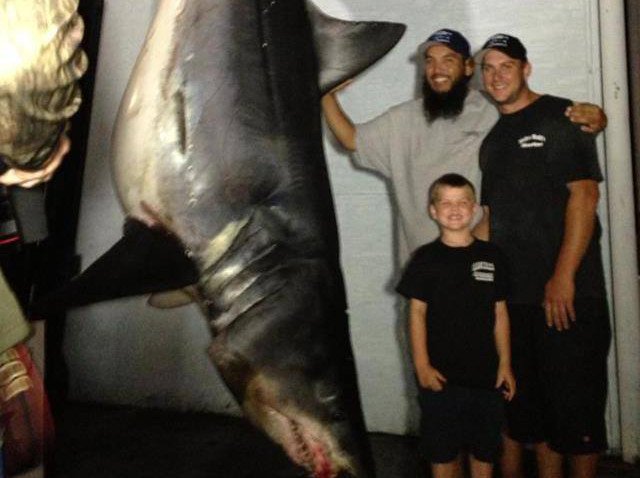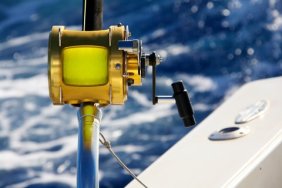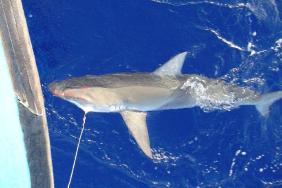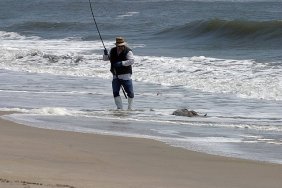World Record Mako Shark caught today weighing 1323.5 lbs!! Now that's how New Fishall likes to start shark season!
Posted by New Fishall Bait Co. on Monday, June 3, 2013
A 1,300 pound mako shark caught in 2013 has a story to tell greater than the two and a half hours it took to reel it in. According to a recent study, the shark caught off Huntington Beach demonstrates just how polluted the waters off Southern Calfornia still are after 30-plus years of environmental achievements.
After studying the female shark, researchers concluded in the Journal of Fish Biology that it contained levels of DDTs and PCBs hundreds of times the safe legal limit determined by the Environmental Protection Agency. Levels of DDT 100 times the limit, PCBs 250 times and mercury 45 times.
“I wouldn’t eat that,” Kady Lyons, a lead author of the study, told the Orange County Register. “It’s definitely something you would not want to eat if you were planning on having children because it has reproductive consequences.”
Scientists have previously understood that the higher a fish exists on the food chain, the higher levels of toxins, most notably mercury, occur in its system. But just how much toxins a large fish could potentially contain remained unclear. This latest study perhaps suggests greater urgency in cleaning up the Pacific Ocean.
In the 1947 to 1971, the Montrose Chemical Corporation dumped tons of DDT into the sewer, which eventually flowed into the ocean off the coast of Palos Verdes. The toxins that collected on the ocean floor now amounts to the largest DDT deposit in the world and a United States Superfund Site.
Since then, mitigation specialists have attempted to cap the contamination with sediment, but much of the chemicals spread throughout local waters. This gargantuan mako shark is just one more reminder that the DDT and other chemicals are likely here to stay for generations to come.
The shark was caught in 2013 by the New Fishall Bait Co. out of Huntington Beach as part of a reality show, requiring 2.5 hours to reel in. Believed to be the largest mako ever caught, researchers determined its age at 22 years old by counting rings on its vertebrae. Within its belly they found a 4-pound sea lion.








